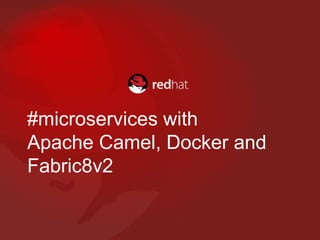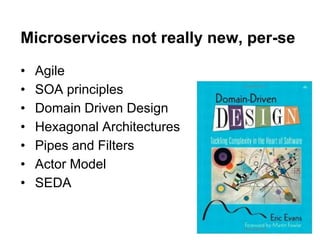The document discusses the implementation of microservices using Apache Camel, Docker, and Fabric8, highlighting their benefits such as faster software delivery, scalability, and modularity, alongside challenges like testing and operational complexity. It emphasizes the need for strong automation, CI/CD practices, and small, cross-functional teams to effectively adopt microservices. Additionally, it provides insights into dynamic routing, circuit breakers, and the architectural frameworks that facilitate microservices deployment.







































